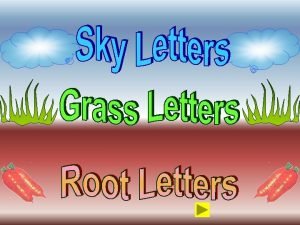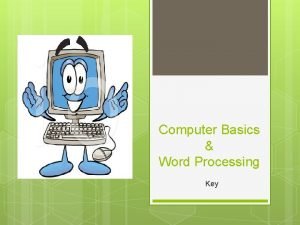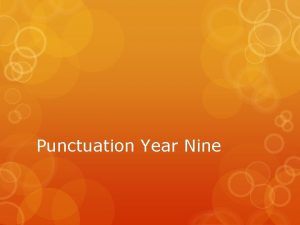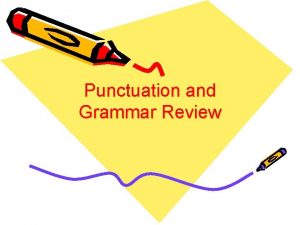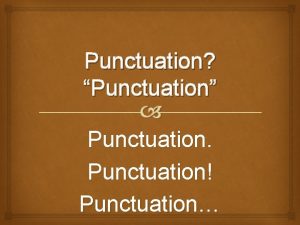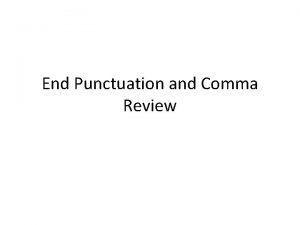Sentence punctuation Capital letters end of sentence punctuation







- Slides: 7

Sentence punctuation Capital letters, end of sentence punctuation and commas Are you a rabbit or a hare? What a silly question!

. Sentences A sentence can be a single clause: H ares do do not dig burrows. Hares. Or a sentence can have two or more clauses: . H aresdo donot notdig digburrows, insteadtheylivein in Hares do not dig burrows, instead they live in ditches. . A sentence always starts with a capital letter, and finish with a full stop, exclamation mark or question mark.

Capital letters are used: • at the start of a sentence. • for days of the week and months of the year. G rey squirrels eat nuts, seeds, buds and sometimes Grey mushrooms. Monday, thesquirrelate atethe thenutsfromthe thebirdfeeder. On Monday, • for proper nouns – the names of things, people, places and titles. Grey squirrels came from Americamorethan 100 years ago. They now live all over Britain. • for abbreviations. There was a very interesting programme on the BBC about grey squirrels.

End of sentence punctuation At the end of a sentence we use a full stop, question mark or exclamation mark to show that the sentence is complete. Full stops come at the end of a sentence. A male red deer has large antlers. Question marks are used to show the sentence is a question. Which is the largest native land animal? Exclamation marks show that the sentence is an exclamation. What a large red deer! How exciting to see a red deer in the wild! Exclamation marks can also be used at the end of a command or to show the sentence is about something urgent or surprising. Run! The deer is chasing us! I can’t believe I ran so fast!

We use commas in different ways: Commas • to separate an item in a list. Field mice eat seeds, berries, small shoots and grains. • to separate clauses or phrases in a sentence. We need a comma when the extra clause or phrase starts the sentence. In order to help them jump, field mice have large back feet. Or when the clause or phrase is in the middle of the sentence. The field mouse, also known as the wood mouse, is the most common mouse species in the UK. • after an adverb or an adverbial if you are using it at the start of a sentence. Interestingly, field mice sometimes eat mushrooms as well as plants.

Sentence punctuation helps to make the meaning of a sentence clear. Use it carefully! I enjoy watching wildlife reading books and ice-skating. I enjoy watching wildlife, reading books and ice-skating. Let’s eat rabbit! Let’s eat, rabbit!

Explore more Hamilton Trust Learning Materials at https: //wrht. org. uk/hamilton/.
